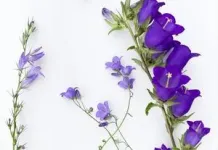(Press-News.org) The annual killifish lives in regions with extreme drought. A research group at the University of Basel now reports in “Science” that the early embryogenesis of killifish diverges from that of other species. Unlike other fish, their body structure is not predetermined from the outset. This could enable the species to survive dry periods unscathed.
The turquoise killifish inhabits areas characterized by extreme conditions. The species, native to Africa, can survive prolonged periods of drought due to its unique life cycle. During humid periods, they lay their fertilized eggs in the mud. When the waters dry out, the adult fish die, while the embryos remain dormant in the dry mud by entering diapause. Once the rain falls, the embryo’s development continues.
In contrast to other animals, the early embryos of killifish completely disperse into individual cells, which later aggregate to form the body axes and the embryo proper. The killifish species Nothobranchius furzeri has thus adapted its embryogenesis and life cycle to its environmental conditions.
Dorsal-ventral body axis
Prof. Alex Schier's team at the Biozentrum, University of Basel, and researchers from Harvard University and the University of Washington in Seattle have discovered that killifish early embryogenesis differs from other fish species also at the molecular level. “Normally, the dorsal-ventral body axis, i.e. the back and the belly of the fish embryo, is already determined by the mother,” says Schier. “We have discovered that embryonic cells of killifish are not maternally pre-patterned, but self-organize to form the body axis.” In their recent publication in “Science”, the researchers describe how the dorsal-ventral axis is formed in killifish.
The so-called Huluwa factor plays a decisive role in early embryonic development in fish. It is passed on from the mother to the embryo and dictates the dorsal-ventral body axis. This is crucial for morphogenesis as well as the correct formation and positioning of organs.
“Previously, it was assumed that Huluwa is indispensable for axis formation,” explains Schier. “We have now been able to show that this factor is inactive in killifish. The embryonic cells find the right place on their own, they completely self-organize after dissociation.” In contrast to other fish, the determination of the dorsal-ventral axis in killifish occurs at a later stage and is regulated by embryonic factors. “The embryo emerges almost magically,” says Schier. “How exactly this happens still remains unclear.”
Well adapted to extreme environmental conditions
“Among fish, annual killifish have an atypical embryonic development that challenges the current concepts of axis formation,” says Schier. The absence of maternal pre-patterning in killifish embryos may offer a survival advantage, preventing the accumulation of damaged cells during dry seasons or the loss of body structure information. “Our study shows that evolution finds alternative developmental routes under selective pressures imposed by extreme environments,” concludes Schier.
END
Fish out of water: How killifish embryos adapted their development
2024-06-06
ELSE PRESS RELEASES FROM THIS DATE:
Novel AI method could improve tissue, tumor analysis and advance treatment of disease
2024-06-06
Researchers at the University of Michigan and Brown University have developed a new computational method to analyze complex tissue data that could transform our current understanding of diseases and how we treat them.
Integrative and Reference-Informed tissue Segmentation, or IRIS, is a novel machine learning and artificial intelligence method that gives biomedical researchers the ability to view more precise information about tissue development, disease pathology and tumor organization.
The findings are published ...
Omega-3 therapy prevents birth-related brain injury in newborn rodents
2024-06-06
NEW YORK, NY--An injectable emulsion containing two omega-3 fatty acids found in fish oil markedly reduced brain damage in newborn rodents after a disruption in the flow of oxygen to the brain near birth, a study by researchers at Columbia University Vagelos College of Physicians and Surgeons has found.
Brain injury due to insufficient oxygen is a severe complication of labor and delivery that occurs in one to three out of every 1,000 live births in the United States. Among babies who survive, the condition can lead to cerebral palsy, cognitive disability, epilepsy, pulmonary hypertension, and neurodevelopmental conditions.
“Hypoxic ...
Calcium oxide’s quantum secret: nearly noiseless qubits
2024-06-06
Calcium oxide is a cheap, chalky chemical compound commonly used in the manufacturing of cement, plaster, paper, and steel. But the material may soon have a more high-tech application.
UChicago Pritzker School of Molecular Engineering researchers and their collaborator in Sweden have used theoretical and computational approaches to discover how tiny, lone atoms of bismuth embedded within solid calcium oxide can act as qubits — the building blocks of quantum computers and quantum communication devices. These qubits are described today in Nature Communications.
“This system has even better properties than we expected,” said Giulia Galli, Liew Family Professor ...
Innovative combination therapy shows promise for bladder cancer patients unresponsive to standard treatment
2024-06-06
TAMPA, Fla. (June 6, 2024) — In a groundbreaking advance that could revolutionize bladder cancer treatment, a novel combination of cretostimogene grenadenorepvec and pembrolizumab has shown remarkable efficacy in patients with Bacillus Calmette-Guérin (BCG)-unresponsive non-muscle invasive bladder cancer. Results from the phase 2 CORE-001 trial, published today in Nature Medicine, reveal a significant improvement in complete response rates and long-term disease control, offering new hope for patients with this challenging condition who face limited treatment options.
The trial included patients with BCG-unresponsive carcinoma in situ of the bladder, a condition that is notoriously ...
SFU Physics collaboration pushes an information engine to its limits
2024-06-06
The molecules that make up the matter around us are in constant motion. What if we could harness that energy and put it to use?
Over 150 years ago Maxwell theorized that if molecules’ motion could be measured accurately, this information could be used to power an engine. Until recently this was a thought experiment, but technological breakthroughs have made it possible to build working information engines in the lab.
With funding from the Foundational Questions Institute, SFU Physics professors John Bechhoefer and David Sivak teamed up to build an information engine and test its limits. Their work has greatly advanced ...
Artificial intelligence blood test provides a reliable way to identify lung cancer
2024-06-06
Using artificial intelligence technology to identify patterns of DNA fragments associated with lung cancer, researchers from the Johns Hopkins Kimmel Cancer Center and other institutions have developed and validated a liquid biopsy that may help identify lung cancer earlier.
In a prospective study published June 3 in Cancer Discovery, the team demonstrated that artificial intelligence technology could identify people more likely to have lung cancer based on DNA fragment patterns in the blood. The study enrolled about 1,000 participants with and without cancer who met the criteria for traditional lung ...
The ethical matrix: it's not just smart; it's the smart thing to do
2024-06-06
Artificial Intelligence (AI) is the talk of the town, but far too often expediency has been the driver, not responsible innovation. The NYC Media Lab (NYCML) at NYU Tandon School of Engineering and Bertelsmann launched their 4th challenge this month, this time aimed at mentoring teams with projects that use AI to responsibly advance their fields.
The 2024 collaboration, The Ethical Matrix Challenge: Forging New AI Frontiers in Media, Communications, Education, and Healthcare, focuses on ethical AI and its power to have a real-world influence. The four selected teams have projects that can responsibly revolutionize the way ...
Study: Young athletes at risk for elevated blood pressure rates, future cardiovascular complications
2024-06-06
A substantial portion of young athletes are at risk of hypertension, according to a study presented at the American College of Cardiology’s Care of the Athletic Heart conference, taking place on June 6-8 in Washington.
High blood pressure, also known as hypertension, occurs in 47% of adults in the U.S., according to CardioSmart.org. Over time, hypertension weakens the heart, blood vessels and kidneys, paving the way for potential stroke or heart attack. Often referred to as the “silent killer,” high blood pressure is a leading risk factor for heart disease and early death.
The 2017 ACC/American Heart Association Guideline for the Prevention, ...
Mpox continues to circulate at low numbers among gay and bisexual men who have sex with men
2024-06-06
While mpox cases have sharply declined since the 2022 global outbreak, they continue to occur in the U.S. among gay and bisexual men who have sex with men (GBMSM), according to a UCLA-led study from EMERGEncy ID NET, a multisite surveillance network funded by the Centers for Disease Control and Prevention (CDC).
Though no cases were found in women, children or the unhoused, vigilance and vaccination remain important, the researchers write.
The findings will be published June 6 in the CDC’s Morbidity and Mortality Weekly Report.
Mpox, formerly known as monkeypox, ...
How the cell cycle orchestra plays an unexpected new tune
2024-06-06
How the Cell Cycle Orchestra Plays an Unexpected New Tune
UCSF scientists discover that multiciliated cells adapt the well-known process of cell division to make hundreds of cilia.
The awe-inspiring process of cell division can turn a fertilized egg into a baby – or a cancerous cell into a malignant tumor. With so much at stake, nature keeps it tightly controlled in a process called the cell cycle that scientists thought they thoroughly understood.
But now it turns out there was more to know. Scientists ...



